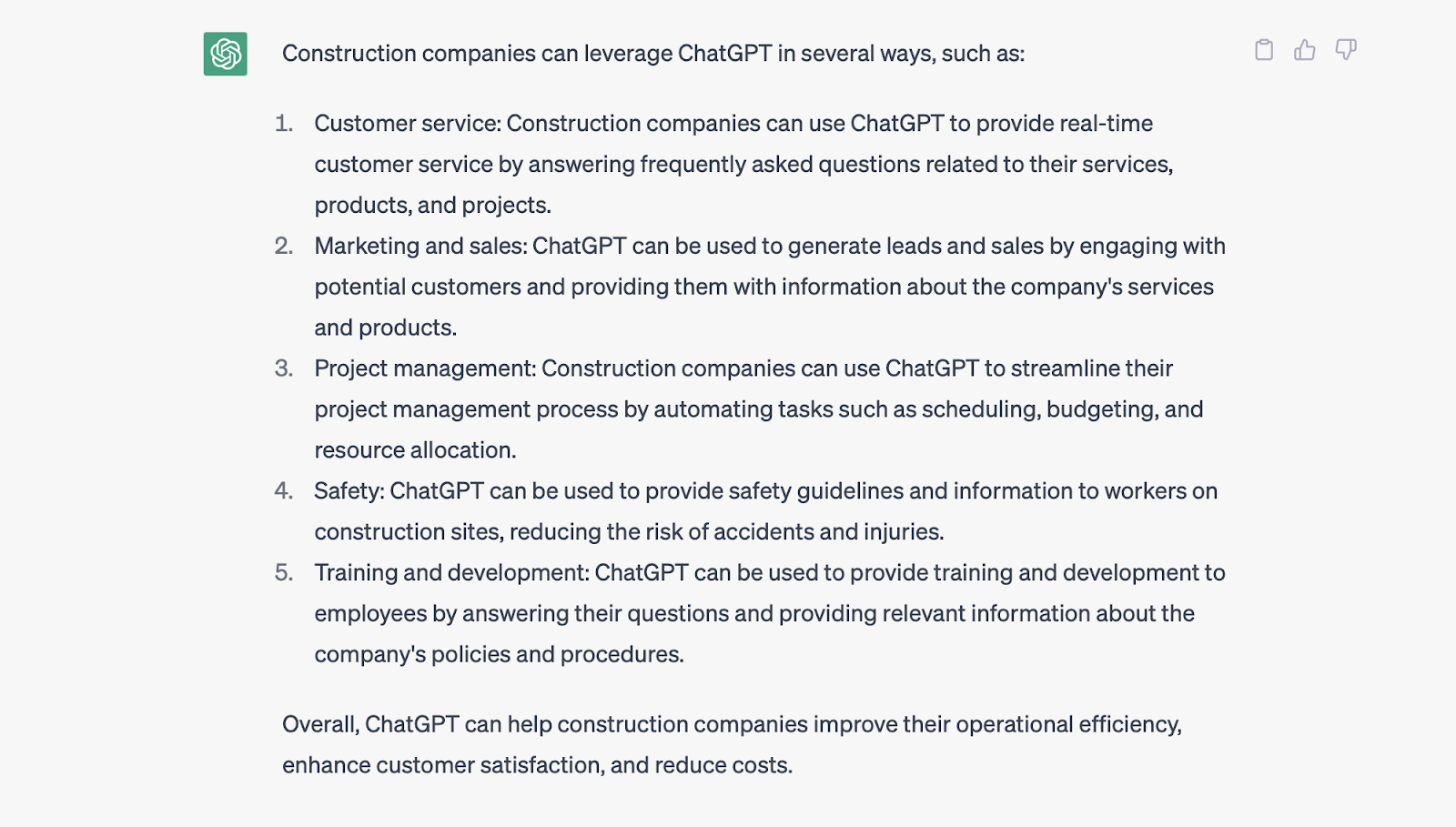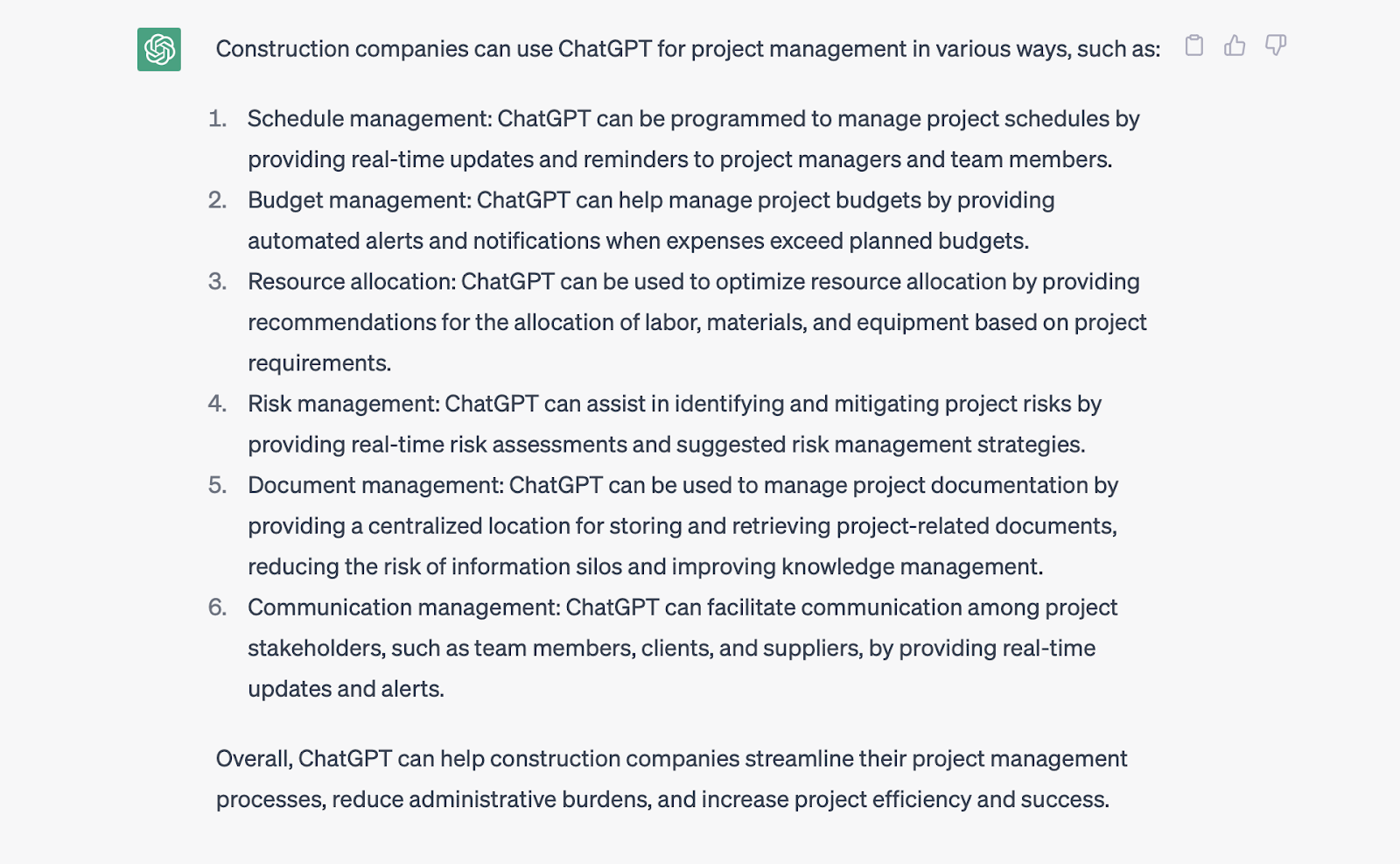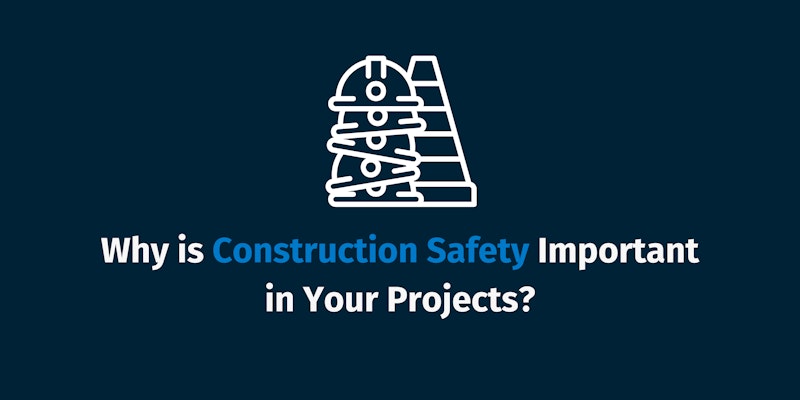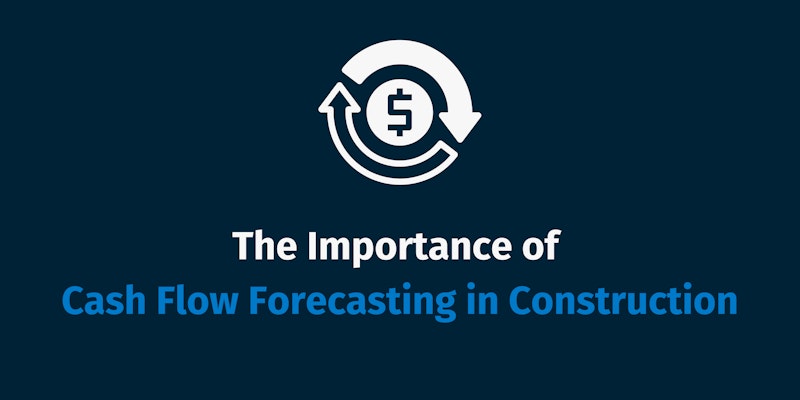ChatGPT was released to the public in November of last year. Since then, the world has been buzzing about its possibilities — and its dangers. Many people speculate that ChatGPT could be the next big disrupter, like the internet and smartphones of the 90s.
Why all the hype?
How powerful can a new chatbot really be? And does it really have the potential to disrupt the construction industry?
In this article, we’ll answer those questions. We’ll cover what ChatGPT is, outline its benefits and drawbacks, and even do a little experiment to show you how it works.
Here’s everything you need to know about ChatGPT in construction:
What Is ChatGPT?
At its most basic, ChatGPT is a computer interface that can have human-like conversations with you. You type a question. It types a response. But it isn’t preloaded with a set of frequently asked questions like the chatbots on customer service sites. Its programming goes much deeper.
ChatGPT is based on an advanced computer architecture called GPT-3. GPT-3 is a large language model (LLM) that has been “trained” on 45,000 GB of text data from books, newspapers, articles, academic bulletins, medical journals, and web content. ChatGPT taps into this massive dataset using artificial intelligence (AI) and deep learning algorithms. This is what allows it to put user queries into context and respond in such a natural-sounding way.
ChatGPT’s capabilities go far beyond its ability to chat, though.
ChatGPT has the power to suggest ideas, create reports, make computations, summarize books, and write articles. It can translate colloquialisms from one language to another. It can code websites. It can mine vast amounts of data in short amounts of time. It can reliably pick winning stocks. It can even analyze protein and molecular sequences.
With features like these, it’s no surprise that companies across all industries – from manufacturing to biosciences – are already racing to find uses for ChatGPT.
What Are the Uses of ChatGPT in Construction?
To learn more about using ChatGPT in construction, we conducted an experiment. We followed this link to create a free ChatGPT account and started asking it questions.
Here’s what we found out:
We asked: “How can construction companies leverage ChatGPT?”
Here is ChatGPT’s answer:

ChatGPT says it has the potential to streamline processes in these five areas:
- Customer Service
- Marketing and Sales
- Project Management
- Safety (Be careful with this one. You’ll see why a little further down.)
- Training and Development
It doesn’t get very specific about how to use it to improve each of these areas, though. So we picked one area, project management, and prompted ChatGPT for more details.
We asked it to: “Give examples of how construction companies can use ChatGPT specifically for project management.”
ChatGPT answered:

Asking ChatGPT to give specific examples for project management resulted in a deeper dive into what it can do. But there were red flags that suggested at least part of its information was false.
According to its answer, ChatGPT can help manage construction schedules, facilitate communication, and assist in providing risk assessments – in real-time. While ChatGPT does have the potential to streamline project management tasks, doing it in real-time is implausible because the data used to train it doesn’t go past the year 2021.
So, we confronted the bot.
We asked: “Is the Information you generate always accurate?”
ChatGPT fessed up:

ChatGPT acknowledged that, though it strives to generate true information, it sometimes misses the mark. In this case, it claimed to have real-time capabilities when, in reality, it doesn’t have access to real-time data feeds.
This is where the drawbacks of using ChatGPT become apparent. The answers it gives aren’t always factual, but they sound like they are. In human terms, ChatGPT is a great B.S.er. In the world of AI, this is called hallucinating, and every LLM does it to some point. That’s why using it to create safety protocols is a risk in itself. It’s extremely important to verify any information ChatGPT gives you.
If you’re willing to do that, the free ChatGPT interface can be a valuable tool. You can use it to do any of these tasks:
- Draft email responses quickly and in varying tones: friendly, formal, or professional
- Ideate social media posts and marketing campaigns
- Research industry best practices
- Create interview questions and job descriptions
- Easily generate reports and bid proposals
On its own, however, ChatGPT’s free interface can’t streamline and automate major construction processes, like resource allocation and project management. That’s out of its scope.
The True Power of ChatGPT Is in its API
To access the real strength of ChatGPT, you need a developer to help you access its application processing interface (API) and integrate it into your existing products or software. Or you need to use third-party, pre-built solutions already powered by ChatGPT.
Here are a few examples of companies in varying industries that are integrating ChatGPT’s API into their products:
- Video conferencing giant, Zoom, is integrating ChatGPT into its platform to help users auto-generate chat and email responses.
- Swiss insurer, Zurich, is testing ChatGPT to see if its data mining capabilities can improve tedious underwriting processes.
- Life sciences company, Huma.ai, launched a new software program that uses ChatGPT to expedite the development of life-saving drugs.
Who’s Using ChatGPT in Construction?
As of now, two companies are pioneering the use of ChatGPT in construction.
DigiBuild
DigiBuild helps contractors manage their supply chain by giving them a way to find, order, and track building materials from start to finish.
For the past several months, DigiBuild has been using ChatGPT to improve the speed at which they can locate materials for their clients. It’s producing great results. Before integrating ChatGPT, reaching out to a handful of suppliers took at least two hours. With ChatGPT, they can reach 100 suppliers in one minute.
Togal.AI
Togal.AI is a construction estimating software that reduces takeoff time.
Togal.AI is using ChatGPT to incorporate voice search into its program. This allows estimators to find the information they need within multiple documents in only seconds.
“It is incredible to see our teams literally talk to their plans and have their plans respond back with answers instantly,” Patrick Murphy, founder, and CEO of Togal.AI, told Construction Technology magazine.
So, does ChatGPT have the potential to disrupt how the construction industry gets work done?
The answer is a resounding, “Yes!”









